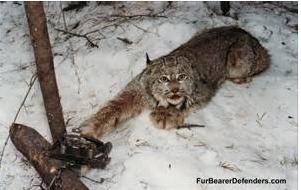News
Latest Lion Aid News
The illegal trade of wildlife.
Tuesday 9th June 2015
|
Falsification of CITES permits occurs on many levels. Most insidious is the forgery of a CITES permit to accompany all manner of shipments, and this appears to be relatively simple to achieve. At another level, fraudulent permits can be obtained relatively simply by bribing CITES management authorities in corrupt countries to issue permits for all and sundry endangered species regardless of any quotas. At a third level, corrupt CITES authorities can issue permits classifying the species under false categories – meaning that a prohibited wild caught animal can be classified as a captive bred animal to evade any quota system. The latter occurs widely. My friend Karl Ammann discusses just a few cases from Guinea in western Africa where chimpanzees are fraudulently exported with false CITES permits on a regular basis. The head of the CITES management authority in Guinea (M.A. Doumbouya) is not very impressed with CITES and he says: “CITES is the dirtiest of conventions regarding falsification and fraud.” But false classifications occur all over the world. You can be sure that a large percentage of permits for the trade in snake skins for the fashion industry are issued with on the basis the skins were derived from “farmed” snakes while they were actually caught in the wild. The opposite blatantly occurred in South Africa where captive raised lions were issued with “wild” lion export permits to satisfy the egos of the hunters. After the EU raised objections, the South African CITES authorities retrospectively (!) amended their permits, but did not receive any reprimand or sanctions for years of issuing false permits from CITES. CITES does issue some “statements” about faked, fraudulent or false “category” permits to their Members, but that seems to largely be the extent to which they are willing to take action. So what can be done? Mr Doumbouya cannot be alone in his evaluation of fraud within the CITES permit system. I would ask you all to write a letter to your country CITES Management Authorities. You can find how to contact them in your country here: The letter needs not to be long or involved. Just ask them this: “Please provide me with statistics gathered by the CITES Secretariat and/or the CITES Standing Committee detailing the following: a) The number of forged CITES permits used in 2013 to accompany illegal exports of CITES listed species; b) The number of CITES permits issued by local Management Authorities using the wrong source codes; c) The steps CITES is taking to eliminate this means of facilitation of the illegal wildlife trade.”
Always remember that CITES is directly responsible to you – you employ them via your taxes!
Picture credit: FurBearerDefenders.com
Tags: CITES, illegal trade, forged permits, Categories: Events/Fundraising, Trophy Hunting, Extinction |
Add a comment | Posted by Chris Macsween at 20:06



 Much talked about these days, with little progress. But one aspect of the illegal trade that is not much discussed is the illegal trade using false, forged or altered CITES permits. In fact, while CITES is well aware of such illegal trade, there are no statistics published on the extent to which this occurs. Too embarrassed?
Much talked about these days, with little progress. But one aspect of the illegal trade that is not much discussed is the illegal trade using false, forged or altered CITES permits. In fact, while CITES is well aware of such illegal trade, there are no statistics published on the extent to which this occurs. Too embarrassed?